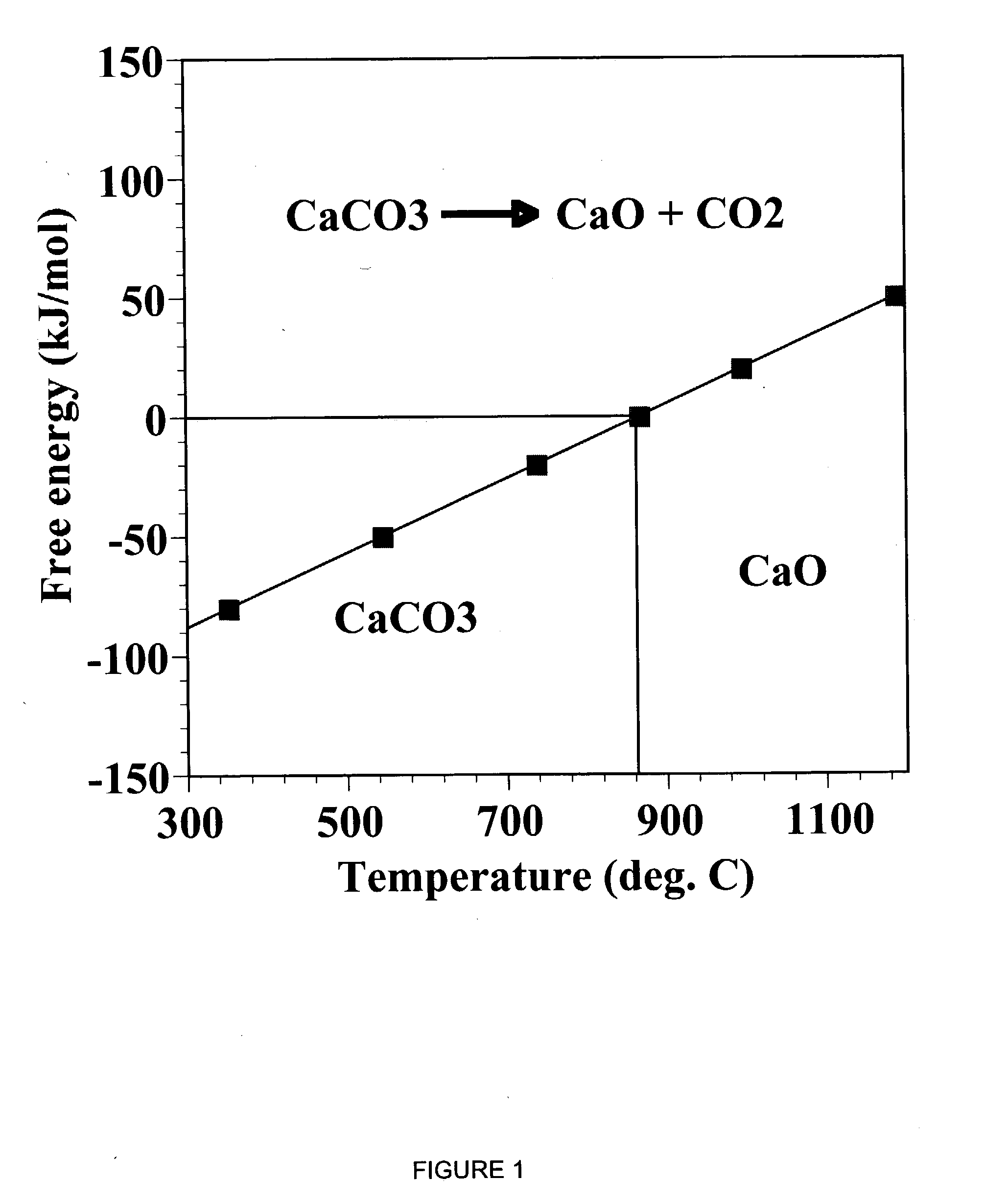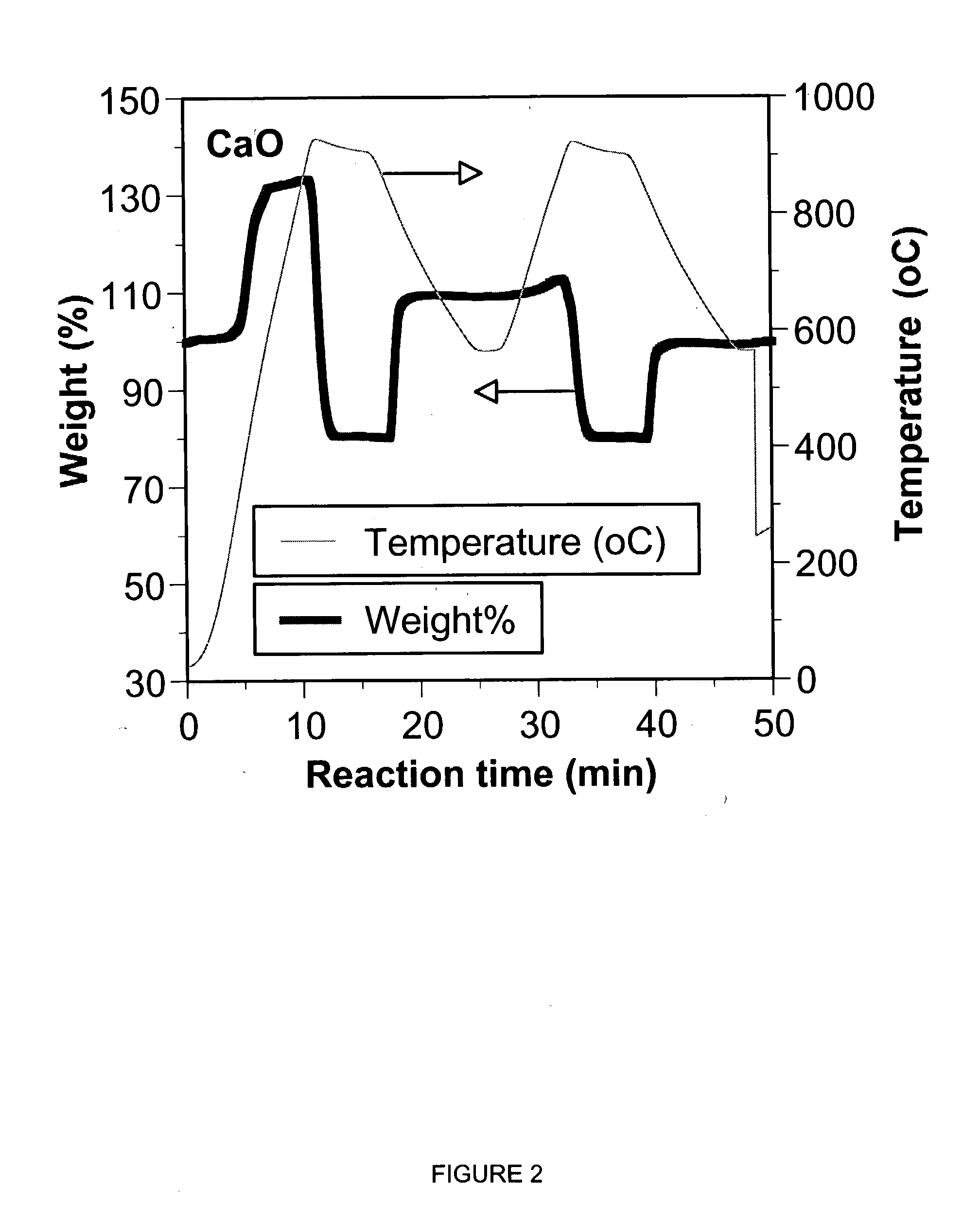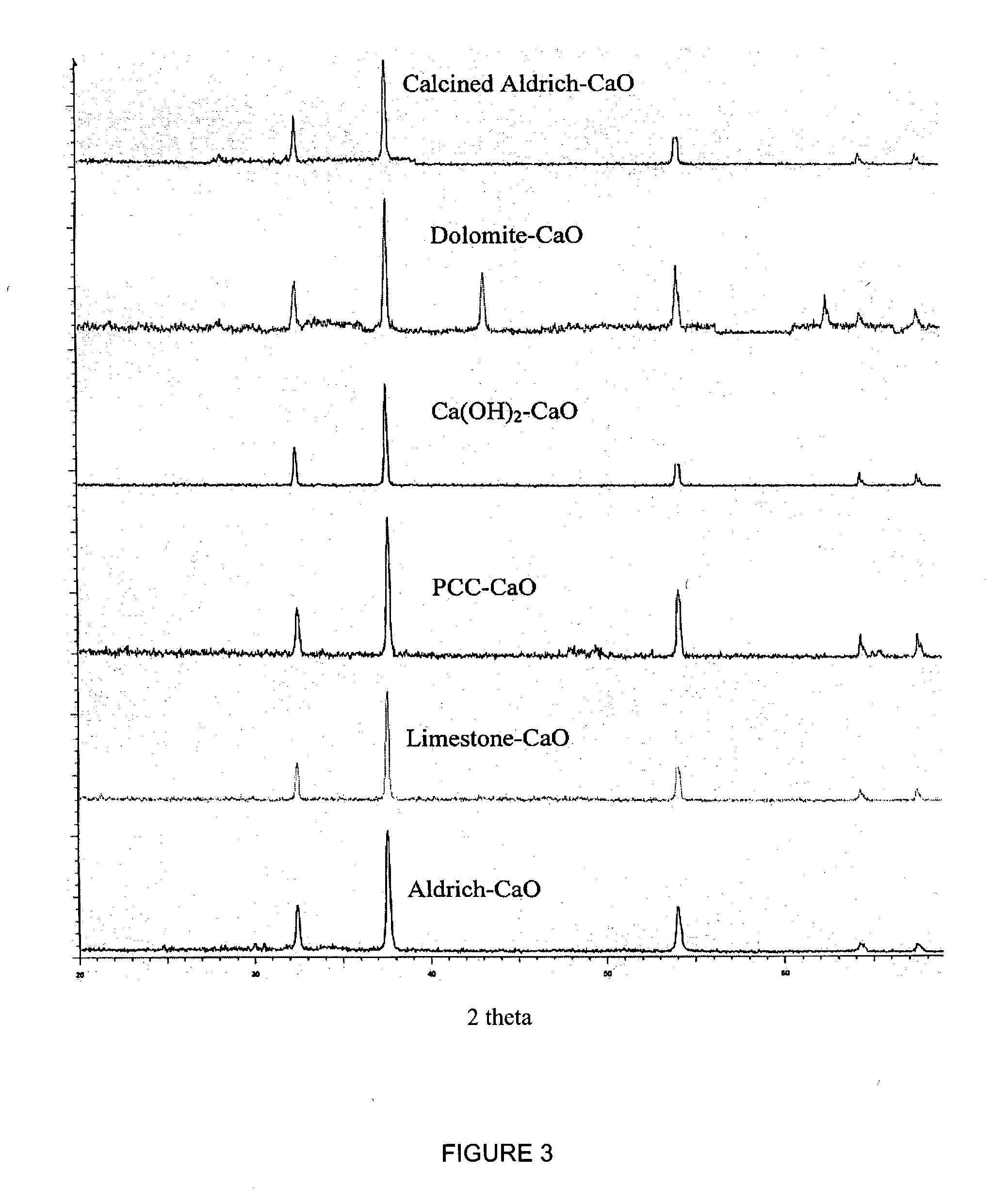Separation of carbon dioxide (CO2) from gas mixtures by calcium based reaction separation (CaRS-CO2) process
a carbon dioxide and reaction separation technology, applied in chemical/physical processes, magnesium compounds, metal/metal-oxide/metal-hydroxide catalysts, etc., can solve the problems of low conversion rate, low conversion rate, and low carbon dioxide (co2) reaction kinetic speed, so as to enhance the repeatability of the process
- Summary
- Abstract
- Description
- Claims
- Application Information
AI Technical Summary
Benefits of technology
Problems solved by technology
Method used
Image
Examples
Embodiment Construction
)
[0046] In accordance with the foregoing summary, the following presents a detailed description of the preferred embodiment(s) of the invention that are currently considered to be the best mode.
Chemicals, Sorbents and Gases
[0047] Naturally occurring limestone (CaCO3) and hydrated lime (Ca(OH)2), synthesized from it were obtained from Linwood Mining and Minerals. Dolomite (CaCO3.MgCO3) was procured from the National Dolomite Company. The purity of these ores was above 90%. High purity metal oxides such as ZnO, MgO, MnO2, NiO, CuO, PbO, CaO were obtained from Aldrich Chemical Company. Precipitated calcium carbonate (PCC) was synthesized from Linwood hydrate by the procedure described in a following section. N40V dispersant, a sodium salt of a carboxylic acid, used in the synthesis of PCC was obtained from Allied Colloid. The synthesis procedure is described in detail in a following section. N2 and CO2 used for calcination and carbonation experiments were 99.999% and 99.9% pure, resp...
PUM
| Property | Measurement | Unit |
|---|---|---|
| Specific surface area | aaaaa | aaaaa |
| Specific surface area | aaaaa | aaaaa |
| Volume | aaaaa | aaaaa |
Abstract
Description
Claims
Application Information
 Login to View More
Login to View More - R&D
- Intellectual Property
- Life Sciences
- Materials
- Tech Scout
- Unparalleled Data Quality
- Higher Quality Content
- 60% Fewer Hallucinations
Browse by: Latest US Patents, China's latest patents, Technical Efficacy Thesaurus, Application Domain, Technology Topic, Popular Technical Reports.
© 2025 PatSnap. All rights reserved.Legal|Privacy policy|Modern Slavery Act Transparency Statement|Sitemap|About US| Contact US: help@patsnap.com



